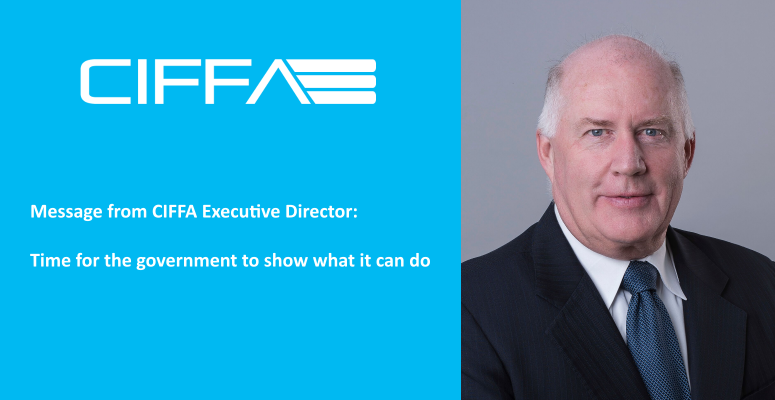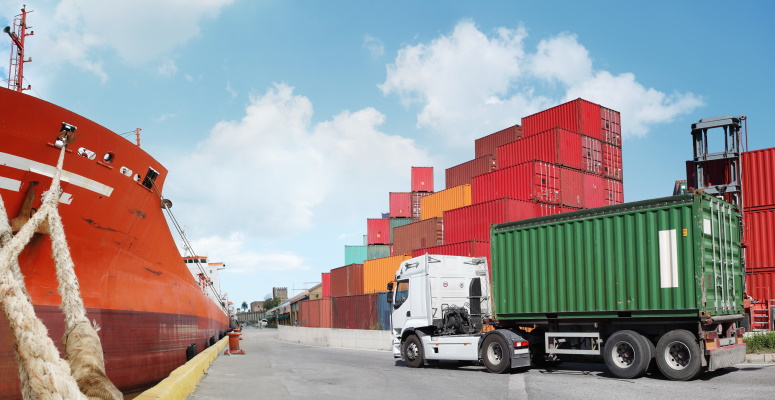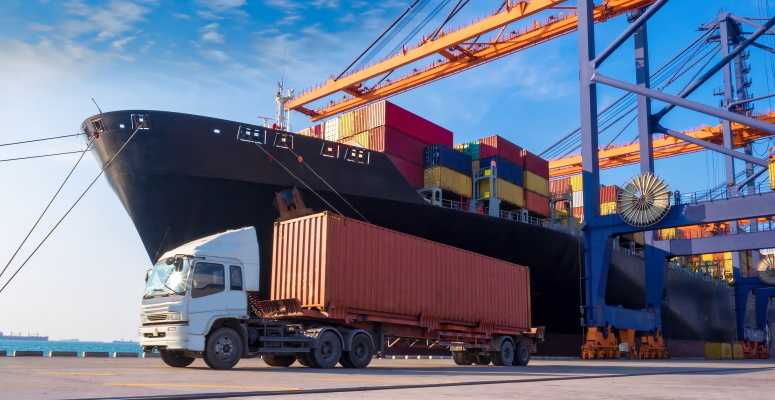
CIFFA presents to The House Standing Committee on Transportation, Infrastructure and Communities
On October 5, 2022, CIFFA’s Executive Director Bruce Rodgers and Director, Policy and Communications Julia Kuzeljevich presented to the House of Commons Standing Committee regarding Anticipated Labour Shortages in the Transportation sector.
CIFFA was one of three witness groups. Also participating were:
- Canadian Transportation Alliance – Stephen Laskowski
- Teamster Union – Omar Bergan and Mariam Abou-Dib
Each group presented an opening statement which was followed by a government Q&A period.
CIFFA thanks its Board of Directors for providing input and content to be addressed.
The questions primarily related to driver shortages and underground economy through Drivers Inc.
We were able to table the following points: supply chain challenges, off-shoring activities, the National Occupation Classification system and the need for a comprehensive National Trade Corridors strategy.
The following text is CIFFA’s written submission as sent to the Clerk:
Remarks of the Canadian International Freight Forwarders Association To The House Standing Committee on Transportation, Infrastructure and Communities
October 5, 2022
Thank you Mr. Chairman for inviting Bruce and me to speak on this critical issue.
Monsieur le président et mesdames et messieurs les membres du Comité, au nom de l’ATIC, l’Association des transitaires internationaux canadiens, nous vous remercions de nous donner cette occasion aujourd’hui de nous adresser à vous.
Before we start, we’d like to compliment the committee for your diligence in chasing these issues, which are so serious and so complex. It means a lot to all of us in the industry that you are looking for any solutions government might provide.
The Canadian International Freight Forwarders Association (CIFFA) represents some 300 regular member firms from the largest of global multi-national freight forwarding firms to small and medium sized Canadian companies. CIFFA member companies employ tens of thousands of highly skilled international trade and transportation specialists.
Our members are the front line of Canada’s supply chain, managing the majority of freight shipments. But it’s important to note that we also represent Drayage operators – these are the truckers serving the ports and container terminals where you have seen such congestion in recent years, and the Freight Brokers – who manage the movement of cross border trade.
The human resource problems in the supply chain are critical and are NOT getting better. Many of the problems are tied up with the frustrations of the supply chain itself.
People used to make their money on speed and volume. Today that’s impossible in many areas.
We have a short, less than 2-minute video, which one of our members recorded that illustrates a small but contributing part of the problem. A copy has been sent to the clerk.
In the video you would see 65 trucks, lined up waiting to get into the one of the Rail yards in Vaughan, Ontario. This is the equivalent length of approximately 40 football fields. These trucks are trying to return empty containers which are required to facilitate export trade.
It’s important to understand that these drivers make their money by moving containers between the rail yards and importers and exporters. As they sit idle they are losing money. It’s hard to recruit new drivers when everyone can see how hazardous a business it’s become. Rising fuel and insurance costs only add to the problem.
The CIFFA member who recorded this told us he had 8 drivers in this line, and none got into the yard that day. Their drivers waited in excess of 5 hours, only to have the gates closed due to Terminal congestion.
By the way, this congestion in Vaughan is actually connected to Canada’s West Coast. Government put significant pressure on the rail providers, terminals operators and the port of Vancouver to clear the backlog and ships at anchorage. The rationale was to facilitate the export of grain. We all understand that priority, but the improved flow in Vancouver doesn’t indicate we solved the problems; we just moved them further inland, to Toronto and Montreal.
So, unfortunately, our first “suggestion” for addressing workforce shortages is to fix the terrible problems affecting the supply chain.
As Parliamentarians you’ll make your own decisions about how interventionist the government should be. Our laissez-faire, market driven system has worked well for decades, but the transport sector is having trouble resetting itself.
The chronic uncertainties that are frustrating consumers are also squeezing the workers and the problem is not getting better.
- Last month we asked the Canada Border Services Agency to consider returning to a clearance system they used until just a few years ago which allowed goods to be released much more quickly, at first-point-of-arrival vs. when the cargo has actually arrived at the destination yard. I have copied the letter to this committee’s clerk for your information. I want the committee to know we are constantly engaging with the government on measures to alleviate delays.
- A couple of specifics on developing the workforce. First, we would urge the committee to engage with training institutions to discover if there are resources they need to up their volumes.
- Across the Canadian economy businesses need to temporarily recruit foreign workers to alleviate our shortages. We have engaged with the Employment and Social Development department on the National Occupation Classification system, which undervalues certain critical transportation management roles, thus discouraging immigrant workers from applying to work here.
- Due to frustrations with the supply chain, employees are leaving this profession, moving to less stressful positions. As a result, freight forwarding employers are moving to off-shore certain functions to aid with the current and future labour challenges. Due to the costs structure that this solution enables, many of these activities will not return to Canada. One of our members commented that off-shoring activities have increased from 10% of their workforce to now up to 25%.
- Finally, we’re supportive of strategies to recruit women into these industries, where they are still a small percentage. But we need to recognize that women drivers may have somewhat different lifestyles and responsibilities than their male counterparts – they may be interested in local shipping, but not transcontinental driving.
And in the video there were no porta-potties along that line. A problem for all drivers, but especially for women.
Thanks to the committee again for your attention to this issue and we welcome your questions.



